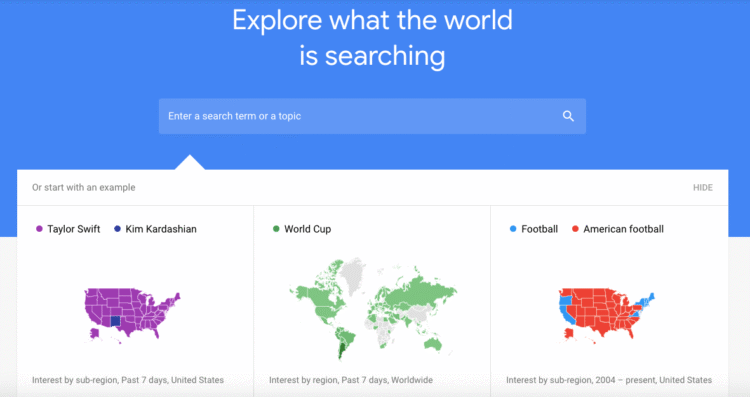Our recommended free online tools for understanding your customers, competitors and campaign, and how you should use them – across 8 marketing analysis activities
I’ve found that when running training courses, the tools I recommend to help marketers are always popular content, especially free tools…
There’s a diverse mix of free tools available, particularly to support marketers gain insight to plan their campaigns, one of the enjoyable aspects of working in digital marketing today.
I originally created this list in 2012, but have kept it updated since it’s popular and new tools are released, and some features become paid… Revisiting it, shows that many of the tools are well established, despite the many lists of essential Generative AI tools.
In this article, I’ll cover 8 marketing analysis activities that hands-on digital marketers need to follow to optimize their reach activities, kicking off their RACE marketing strategy. There are 25+ links to alternative tools in all covering all the major digital marketing channels from search to social media marketing to email and websites.
Our RACE Growth System is a popular marketing structure framework for Startups, SMEs, and international corporations, since it can scale up or down according to your short-term and long-term digital marketing objectives.
Simply put, RACE guides marketers through a planned, insight-driven strategy to acquire and retain more customers. All our marketing tools and templates are integrated across our RACE Growth System, so you can confidently adapt and apply marketing strategies and techniques across your marketing funnel to drive growth.
You can find out more about our RACE Growth System when you download your free RACE marketing plan template, complete with recommendations for digital marketing tools and techniques to generate growth across each stage of your marketing funnel today.
OK, now onto the free tools…
1. Understanding customer search behaviour
The Google Keyword Planner has been an essential tool for hands-on marketers since it launched since it enables you to get into the minds of your audience, seeing what they are searching by how popular different search terms are. There are equivalent tools from Search tools providers like SEMRush, but these are limited in that they don’t use the insight direct from Google.
So, it’s really useful for forecasting where you should be focusing your SEO and Google Ads. We recommend using this insight to do an SEO/Google Ads gap analysis with our premium members template to see where you are getting results and where you need to focus your improvements.
No longer a standalone tool, it’s part of Google Ads, for which you need to register. It’s free, but you get more specific figures on number of searches per month if you have active campaigns, and also insights on your Google Ads visibility (ad impression share).

As the example shows, you can use it to discover new keywords based on an existing page (your own, or for competitors).
The Keyword Planner doesn’t give you info on which search terms drive visits to your site, so a related essential tool is Google Search Console, which also feeds into our gap analysis. When linked with your Google Analytics, it gives you invaluable insight into your conversion rates for different keywords too.
While I’m talking SEO, I have to give honourable mentions to these two SEO tools, I still use regularly. First, Screaming Frog , a site crawler that indexes small sites for free and highlights errors and insights on articles and Yoast – useful if your site is running on WordPress as many still are.
2. Reviewing brand mentions and the latest developments in your industry
Google Alerts
Many marketers still use Google Alerts for reviewing mentions of their brand, campaign hashtags or competitor names by entering keywords, so it’s still widely used. However, it’s mainly based on the analysis of sites and misses out on social media mentions.
Talkwalker
To help here, I recommend the free Talkwalker Alerts service from the social listening service Talkwalker (now part of Hootsuite). Talkwalker’s Free social search also monitors mentions of your brand, hashtags and competitors on social media.

Feedly
Although RSS isn’t “in vogue” as it was 10+ years ago, I still find there’s no substitute for using this as a listening post for developments in your industry. I am recommending Feedly because it’s the most popular – so you can see by the ‘voice of the crowd’ which posts are most popular.
Although feed readers aren’t in fashion they are the most efficient way to scan the latest news in different categories.
-
3. Managing social media updates
Hootsuite and Buffer
I’ve used Hootsuite for posting updates to social networks and reviewing what others are saying for many now. Hootsuite and also Buffer are comfortably the most popular free tools for posting and reviewing social media updates, you probably use them.
Hootsuite is great as a way of keeping tabs on competitors and influencers too, with integrations to enable social listening and monitoring content trends.
There is no single free tool that works well for this. Often using Google or LinkedIn manually are the best way.
A long while ago you could use reputation tools like Klout, Kred or Peerindex, but these have faded.
For B2C influencer sourcing, most free tools are freemium, aimed at encouraging you to hire influencers through a paid plan. Still free tools such as Collabstr can give you a good idea of micro-influencers in different sectors and locations. Impulze.ai also has a free Influencer Marketing Tool.

For B2B, LinkedIn sector skills used to be the best source for finding business influencers because of grouping by narrower topics – but LinkedIn killed this – monetization again. LinkedIn Navigator is probably the best replacement.

Followerwonk
Followerwonk is still available as a free service that can be used to find influencers via their Twitter/X bio, but this limits it, as these examples show. Most marketers I know wouldn’t know of the top 3 ‘influencers’ here, instead, they are being rewarded for the use of auto-follow bots.

-
5. Competitor site benchmarking
It used to be that Google AdPlanner was unbeatable for comparing audience size and dimension. That’s been folded into Google Ads as the Campaign Planner and now limited to media sites, but still useful for finding size and quality of audience for partner and media sites and don’t forget about the related Google Placement Targeting Tool useful for remarketing and research.
Today, my ‘go to’ tool for benchmarking is Similar Web, a freemium tool launched in 2013 and offering free stats on all sites including referrers.

When it comes to benchmarking, our RACE Framework offers marketers, managers and business owners a simple structure to measure and optimize the key marketing activities in their customers’ lifecycles. Our Free Member templates for benchmarking your marketing support you through the step-by-step process of improving your marketing effectiveness.
-
6. Free CRM and Email marketing tools
Email is still an important communication tool, particularly for sending to customers and leads and some email and CRM providers still provide a free tier which can support free businesses.
This category was really invented by free tools from Mailchimp and Hubspot, but these are now so limited that they can’t be recommended.
For new businesses, with a small customer base, I instead recommend Mailerlite or Brevo which both give the opportunity to send several emails to up to 1,000 subscribers for free.
-
7. Online writing support tools including Generative AI tools
Since marketers spend so much of their time in content management systems or online SaaS Martech, it’s important to check copy and grammar automatically. Grammarly has become the de facto standard here – it’s a plugin you install into Google Chrome. Personally, I use Language Tool since it’s just as good and less intrusive – the nags to upgrade in Grammarly became too much for me -;
We also routinely use the Chrome Extension CheckMyLinks for spotting broken links.
Of course, since 2022 and the launch of ChatGPT every marketer uses Generative AI tools of which ChatGPT is the best known and most widely used tool. This could change since, with GPT 5 the number of prompts has been limited and I expect many will switch to Google Gemini which is now much more capable as a free tool. We subscribe to the Plus version of ChatGPT, so for now, I mainly use that, just using Gemini when following up on AI Overviews and when looking for more up-to-date summaries of trends.
Since the launch of ChatGPT many of our free and paid resources cover how marketers can make the most of GenAI tools, if you’re looking to improve, I recommend our article recommending the best prompts for using ChatGPT for digital marketing and our free ChatGPT Cheatsheet.
-
8. Understanding overall online marketing effectiveness
Finally, I still believe that Google Analytics or an equivalent is essential for all who work in marketing to master. With the launch of Google Analytics 4, being seen as a step backwards by me and most marketers I speak to, due to usability, insights and privacy concerns, there are good free options to consider of which Matomo and PiwikPro are the best known and recommended.
I hope this compilation is useful, what do you find most useful of the digital marketing tools we have covered here and other tools we don’t? Join Smart Insights as a Free Member for instant access to our free RACE Growth System template to build an actionable, practical step-by-step marketing plan that drives the results you need.


















